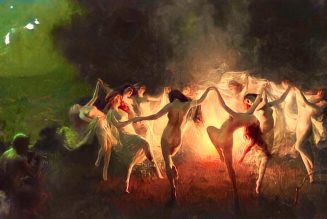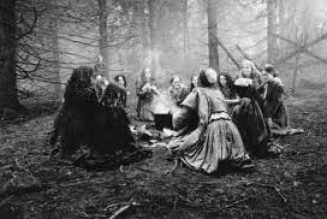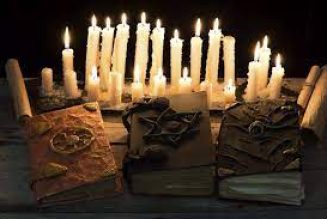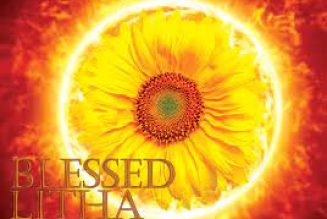
The Wheel of the Year is an ancient concept that has been used by many cultures throughout history to mark the changing seasons and cycles of nature. Its origins can be traced back to prehistoric times when people relied on the cycles of the sun, moon, and stars to measure the passing of time. The ancient Celts, who inhabited much of Europe from the 8th century BCE to the 3rd century CE, were among the first to formalize this concept and develop the Sabbats, or seasonal festivals, that are still celebrated by modern pagans and Wiccans. In addition, the Wheel of the Year serves as a guide for individuals seeking alternative spiritual paths.
CELTIC FIRE FESTIVALS
The earliest origins of the Wheel of the Year are from the four Celtic Fire Festivals. The Celts divided the year into two seasons, summer and winter, and marked the transition between these seasons with four Sabbats: Imbolc, Beltane, Lughnasadh, and Samhain. Imbolc, celebrated on February 1st, marked the beginning of spring and the start of the agricultural season. It was a time for purification and renewal, as well as a time to honor the goddess Brigid. Beltane, celebrated on May 1st, marked the halfway point between the spring equinox and the summer solstice and was associated with fertility and new growth. It was a time for feasting, dancing, and celebrating the union of the god and goddess. Lughnasadh, celebrated on August 1st, marked the beginning of the harvest season and was a time to give thanks for the bounty of the earth. It was also associated with the god Lugh, who was said to have sacrificed himself to ensure a good harvest. Samhain, celebrated on November 1st, marked the end of the harvest season and the beginning of winter. It was a time to honor the dead and the thinning of the veil between the living and the dead.
CHRISTIANITY & THE WHEEL OF THE YEAR
With the spread of Christianity throughout Europe, many of the old pagan traditions and beliefs were absorbed into the Christian faith. The Catholic Church introduced a new set of holidays, or holy days, that were based on the astronomical cycles of the sun and moon. These holy days were Christmas, Easter, Pentecost, and All Saints’ Day. However, many of the old pagan customs and beliefs persisted, and the pagan festivals were adapted to fit the new Christian holidays. For example, Samhain became All Saints’ Day, which was later renamed All Souls’ Day. The night before All Souls’ Day became known as All Hallows’ Eve, or Halloween.
THE MODERN WHEEL OF THE YEAR
In the 20th century, interest in pagan and earth-based spiritual practices began to grow, and many people began to rediscover and revive the old pagan traditions and beliefs, including the Wheel of the Year. Today, the Wheel of the Year is celebrated by modern pagans, Wiccans, and other earth-based spiritual practitioners, who have adapted and expanded the concept to include eight Sabbats, each marking a significant moment in the yearly cycle.
The eight Sabbats of the modern Wheel of the Year include Samhain, Yule, Imbolc, Ostara, Beltane, Litha, Lughnasadh, and Mabon. Samhain, celebrated on October 31st, is still associated with the thinning of the veil between the living and the dead and is a time to honor ancestors and departed loved ones. Yule, celebrated on the winter solstice, marks the shortest day and longest night of the year and is a time to celebrate the rebirth of the sun and the return of light. Imbolc, celebrated on February 2nd, marks the beginning of spring and is associated with purification, new beginnings, and the goddess Brigid. Ostara, celebrated on the spring equinox, is a time of balance between light and dark and is associated with fertility and growth. Beltane, celebrated on May 1st, is a time to celebrate the union of the god and goddess and the fertility of the earth. Litha, celebrated on the summer solstice, is the longest day of the year and is a time to honor the sun and the power of the god. Lughnasadh, celebrated on August 1st, marks the beginning of the harvest season and is a time to give thanks for the bounty of the earth. Mabon, celebrated on the fall equinox, is a time of balance between light and dark and is a time to give thanks for the abundance of the harvest and to prepare for the coming winter.
The Wheel of the Year is a cyclical concept that has been used by many cultures throughout history to mark the changing seasons and cycles of nature. Its origins can be traced back to prehistoric times when people relied on the cycles of the sun, moon, and stars to measure the passing of time. The ancient Celts developed the Sabbats, or seasonal festivals, that are still celebrated by modern pagans and Wiccans. With the spread of Christianity, many of the old pagan customs and beliefs were absorbed into the Christian faith. Today, the Wheel of the Year is celebrated by modern pagans, Wiccans, and other earth-based spiritual practitioners, who have adapted and expanded the concept to include eight Sabbats, each marking a significant moment in the yearly cycle. Celebrating the Wheel of the Year is a way to connect with nature, honor the changing seasons, and recognize the cycles of life, death, and rebirth that are an essential part of the natural world.







